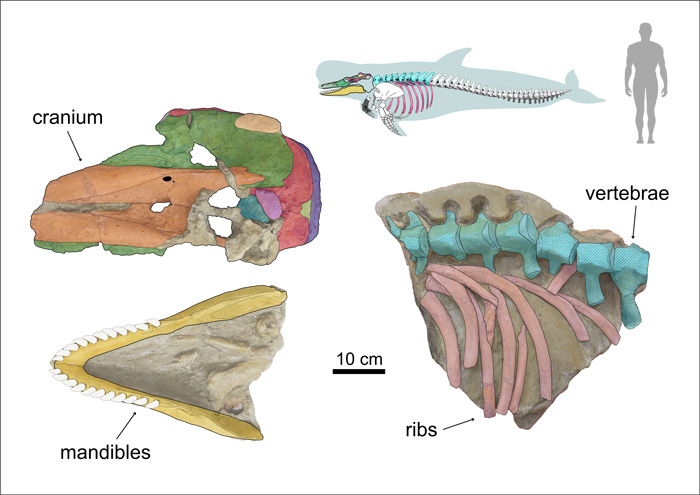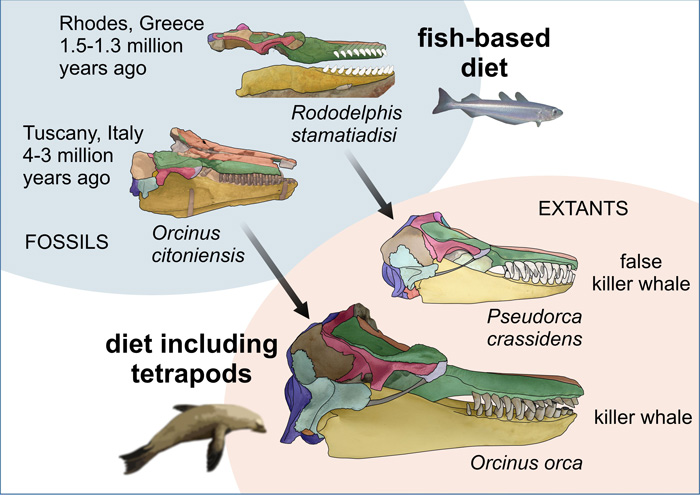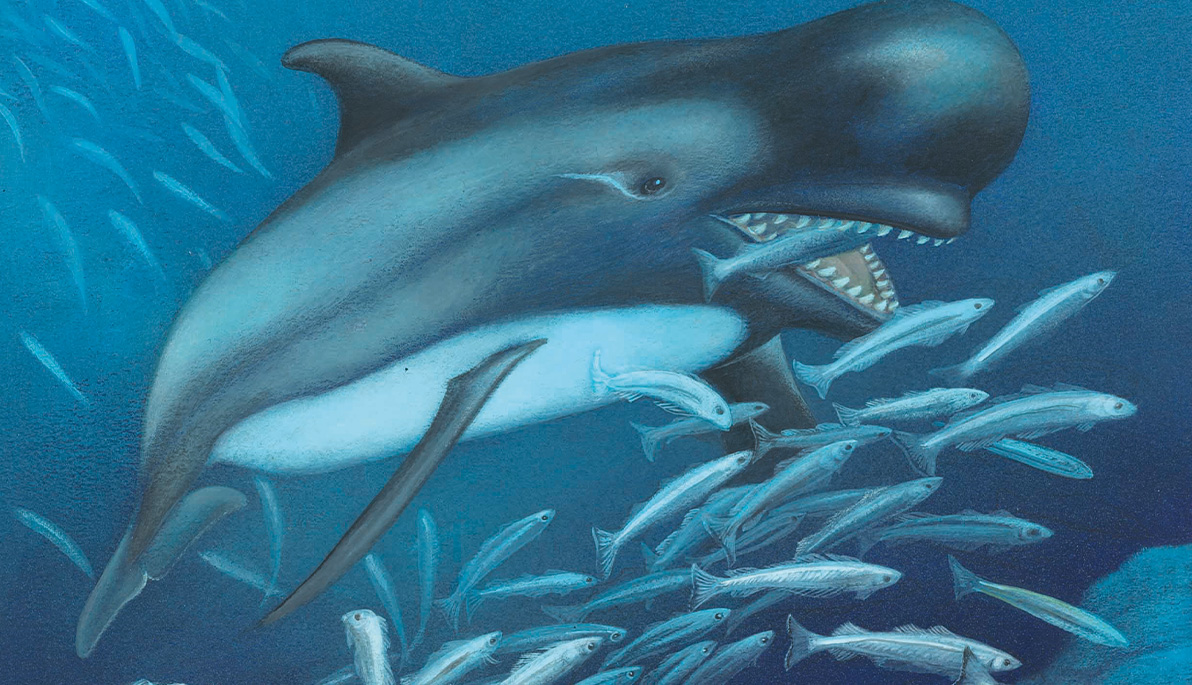News
Study: Early Killer Whales Ate Fish—Not Other Marine Mammals
March 7, 2022
Pictured: Life reconstruction of the Pleistocene false killer whale Rododelphis stamatiadisi preying upon blue whiting fish in deep waters off the coast of Greece. Credit: Rossella Falen
Only two species of cetaceans (dolphins, whales, and porpoises) prey on other marine mammals: the true killer whale, or orca, and the false killer whale, which has a skeleton similar to the orca but gray coloring vs. black and white. Both predators are members of the oceanic dolphin family, with pods of orcas even known to aggressively hunt and eat blue whales—the largest creatures to ever live. However, it is unclear when this predatory behavior began, and fossil records for both species are extremely limited.
Now, a study published March 7 in the scientific journal Current Biology, co-authored by Jonathan Geisler, Ph.D., associate professor and chair of anatomy at the College of Osteopathic Medicine (NYITCOM), and Giovanni Bianucci, Ph.D., a paleontologist at the University of Pisa (Italy), may hold vital clues.
In 2020, the remains of an ancient dolphin unknown to science were found on the Greek island of Rhodes, providing the first clear fossil evidence for the origins of the false killer whale. Geisler, Bianucci, and several other colleagues from the University of Pisa named the species Rododelphis stamatiadisi, after the island where the fossil was found and the paleontologist who made the discovery (Polychronis Stamatiadis). Based on the layer of earth that contained Rododelphis, it is estimated that the dolphin lived 1.5 million years ago during the Pleistocene epoch.
To better understand Rododelphis, the researchers compared its anatomy to today’s false killer whales and orcas, as well as Orcinus citoniensis, the orca’s only known fossil relative. Based on the width of its skull, Rododelphis was roughly the same size as modern false killer whales, measuring 13 feet long and weighing approximately 1,200 pounds. Surprisingly, next to the fossil were remnants of its last meal: fish bones.

Graphic of Rododelphis’s skeleton shows the extinct dolphin’s head, jaw, ribs, and backbone. Rododelphis was roughly the same size as modern false killer whales, measuring 13 feet long and weighing approximately 1,200 pounds. Credit: Giovanni Bianucci
Much like modern orcas, Orcinus had powerful jaw muscles and sharp interlocking teeth. However, these teeth were smaller than those of today’s orcas, and there were more of them. Interestingly, the teeth of both Orcinus and Rododelphis lacked the rough scratches and chipping commonly caused by eating limbed prey, such as mammals. Instead, their teeth had fine scratches and little chipping, suggesting that both species ate fish.
The study’s findings also contradict the popular theory that large whales, including the blue whale, evolved giant bodies to avoid predation. While the first giant whales emerged 3.6 million years ago, Geisler and Bianucci’s findings suggest that ancient dolphins began preying on other marine mammals, including whales, well after this. The researchers believe that this behavior began in orcas within the last three million years, with false killer whales adapting this behavior within the last 1.5 million years.

Graphical abstract compares the cranial anatomy of the orca and false killer whales, as well as their closest known fossil relatives, Orcinus and the newly discovered Rododelphis, respectively. These extinct dolphins both ate fish, indicating that their living relatives recently evolved the behavior to feed on seals, dolphins, and other whales. Credit: Giovanni Bianucci
“The diversification of the oceanic dolphin family occurred within the last five million years, but fossil evidence from the Pleistocene epoch is exceedingly rare,” said Geisler, who is an expert in marine mammal evolution. “With Rododelphis, we’re now beginning to fill this gap and better understand the repeated evolution of feeding adaptations in oceanic dolphins—in other words, how both orcas and false killer whales separately evolved similar cranial anatomy and the behavior of feeding on other marine mammals.”
While the findings provide the first fossil data for determining when these feeding adaptations began, narrowing the timeline further will require more fossils and additional research. Given this, the researchers call for future investigations in areas like Greece and Italy, some of the few regions where Pleistocene marine sediments are extensively exposed.





